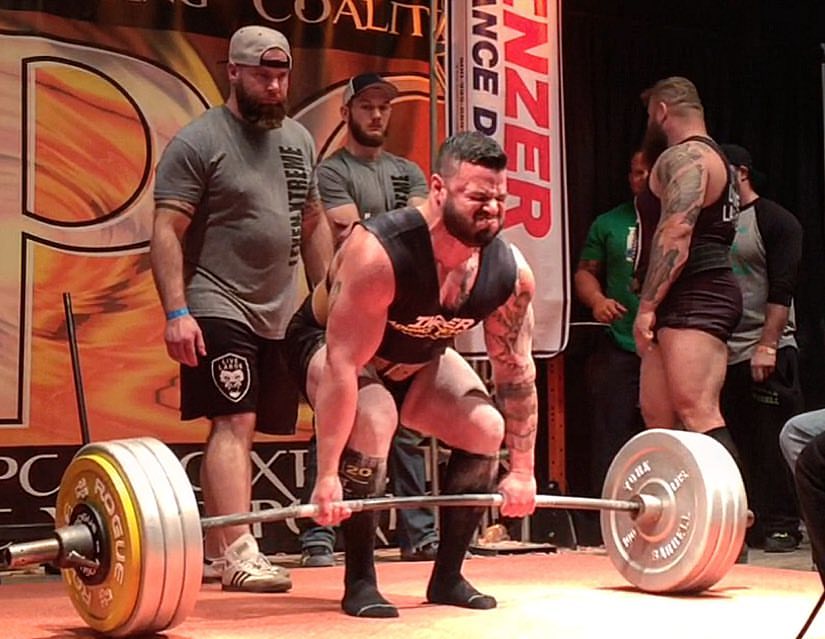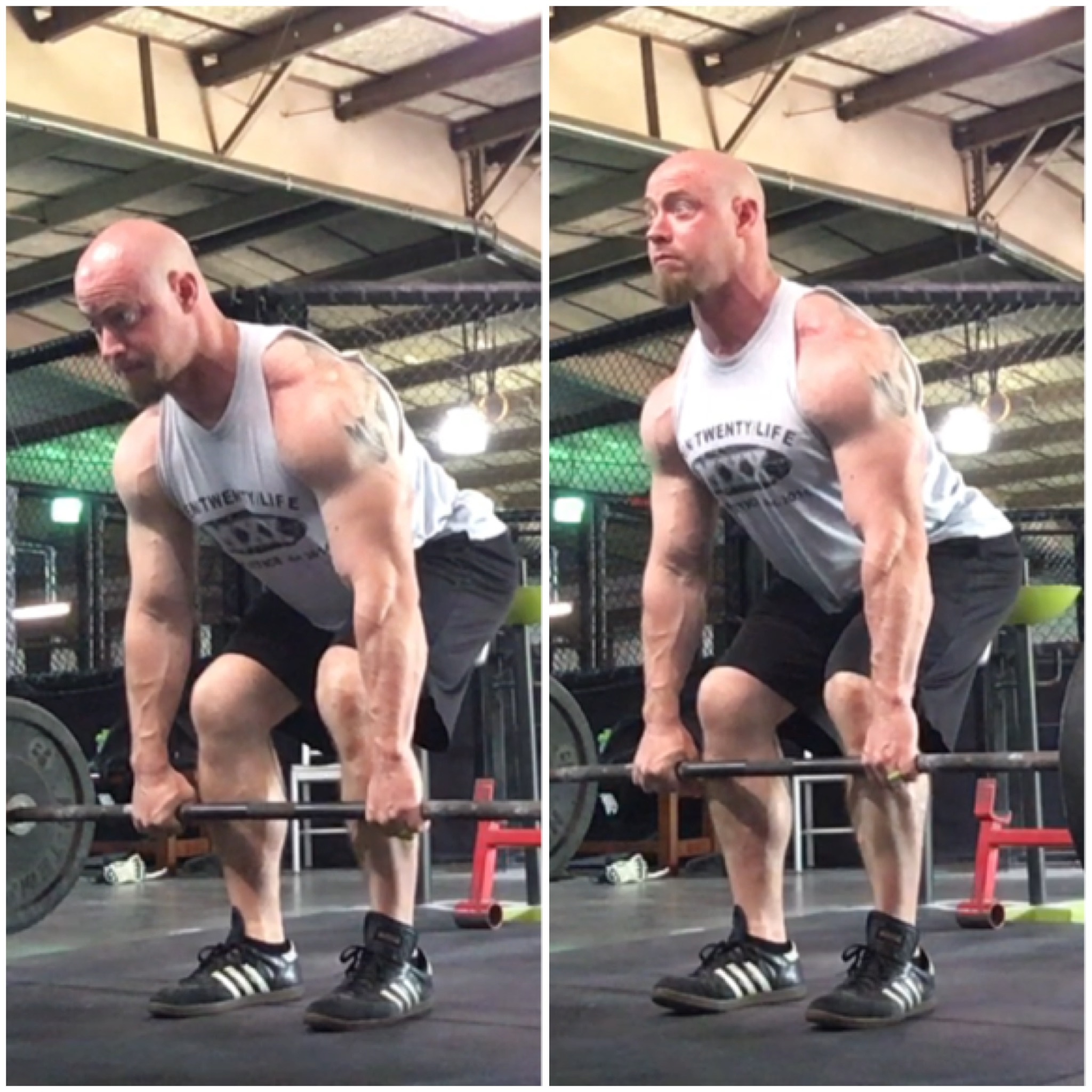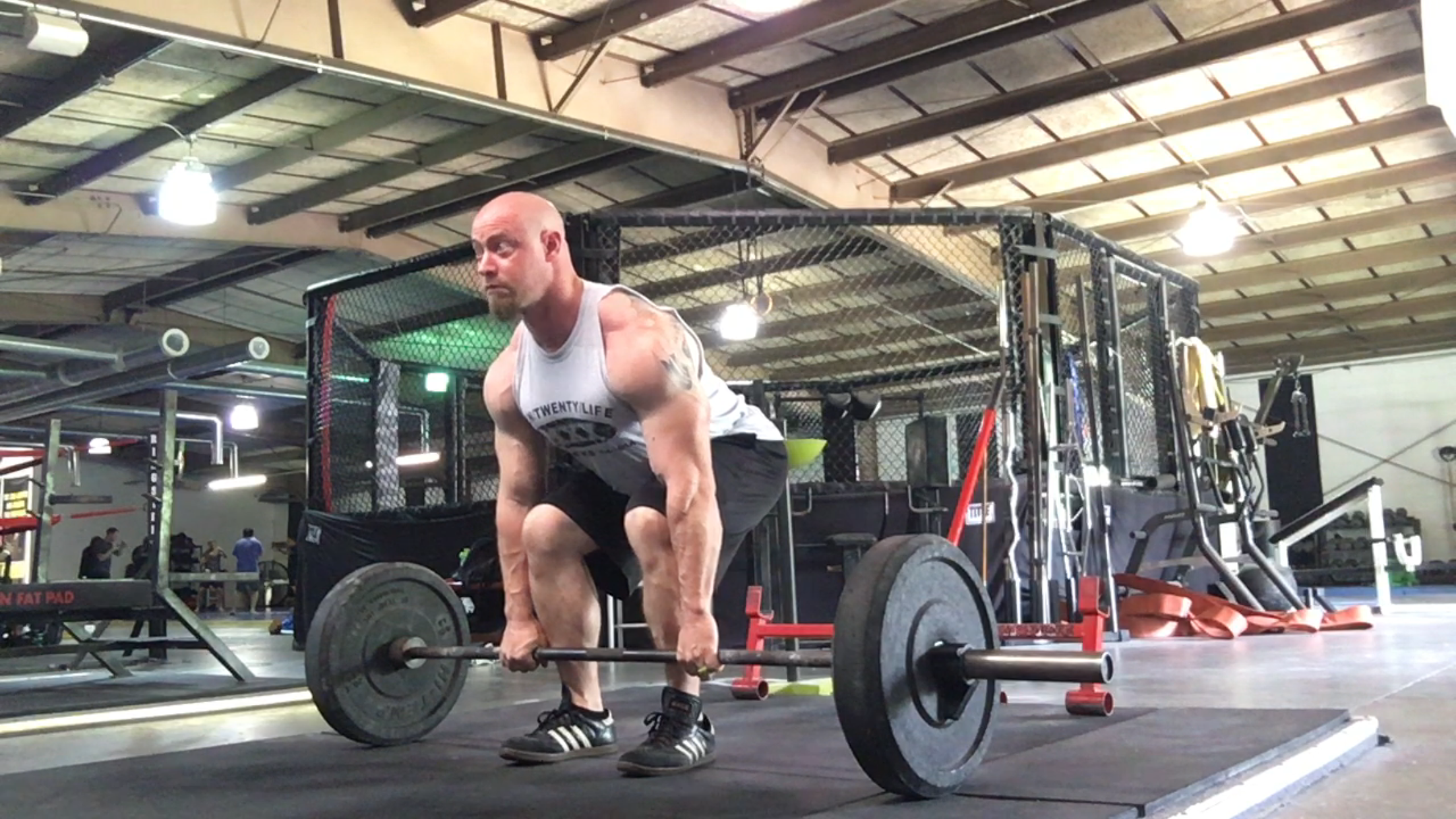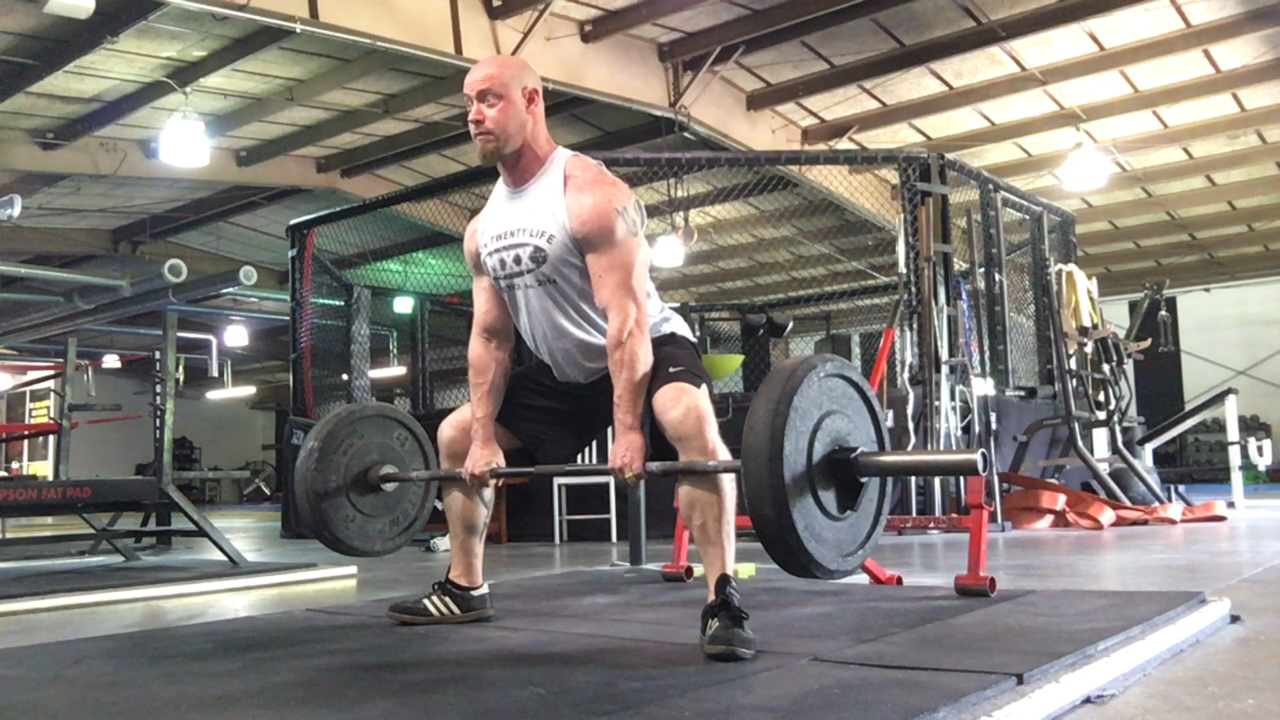
18 May Paused Deadlifts
By Will Kuenzel
Technique. Technique. Technique. It’s what drives efficiency. Loss of technique leads to a loss of strength. More strength is necessary to overcome poor movements. I use the pause squat and pause deadlift to work on technique more than anything. Sure, they can be used to build endurance to suffering and bring up certain weaknesses through sticking points, but the one area I love to use them is to hammer technique and positioning through the weakest part of the lifts.
[wa-wps]
The two biggest problem areas I see in the deadlift is just off the ground, or right before it passes the knee. That short little distance from mid-shin to knee height is where the deadlift is won or lost. It could be a matter of leg drive off the bottom, pulling to much, not getting into a tight lifters’ wedge, or losing upper back position. As technique is analyzed, we can get a better idea of what cues to use during the pause.
Where to Pause?
Pause deadlifts are typically done on the way up off the floor. Depending upon the issues that we’re looking at correcting, the pause can be anywhere from one inch off the floor, up to about an inch below knee level. I’ve only had one person pause at knee level and that was to help prevent ramping, but this is a rare occurrence.
I have also been known to make folks pause a deadlift on the way down as well. This eccentric training can go a long way for helping to reinforce position. Rather than see a client, or athlete get loose and just drop the bar, that eccentric control can help solidify position. It is just more time spent practicing better position. Practice though both the eccentric and concentric helps to build better technique. The same guidelines are applied for an eccentric pause – anywhere from just below knee height, down to 1″ off the floor.
Sumo or conventional?
Both, of course! Using the opposite stance pause deadlift as a supplemental exercise to your primary pulling stance can really highlight weaknesses, or just help to build the deadlift all together. Movements that are tough are generally movements that can help build weak links. Remember, you’re only as strong as the weakest link in the chain. Never let the strong points get weaker, but always look for those areas that need the most improvement.
Going through it
Doing a pause deadlift is no different than setting up for a normal deadlift. Everything stays the same, but there is just a pause mid-rep. No change in foot position or grip. Breathing is still the same, but you are going to have to hold it for a longer duration.
The important part is making that pause worth it. This shouldn’t be something you’re powering through. The weight is lighter than if you were doing a normal deadlift. That’s because it’s more difficult, but at the same time you want it lighter so that technique can be a priority. While performing the pause, I try to accentuate the proper position as best I can. Sometimes that means I move into that position during the “pause,” but the bar doesn’t move. Sometimes, because I’ve corrected the issues, there is no movement.
How long should the pause be?
However long it takes to suffer. Well, I’m only half kidding – It should suck. The lighter the weight, the longer the pause. If I feel an individual is really needing more muscular endurance, then the pauses will be longer, with a specific emphasis on making sure the proper muscles are utilized. A shorter pause, but never less than 2 seconds, will generally mean heavier weights to focus on overcoming technique issues through specific portions of the range of motion. In short, pauses can last anywhere from 2 seconds up to 10 seconds. Although, the longer pauses are generally rare.
Setting up for a conventional pause deadlift
The goal is to generate the same tightness as a one rep max. Squeeze into position using the lifter’s wedge. As the slack come out, the bar should start to inch off the floor. Initiate the pull and once it has reached the desired height, stop and hold. It’s at this position that you should be able to get into an even tighter position. Usually the bottom of the deadlift is the toughest position because of lack of flexibility and stiffness. As the bar gets progressively higher, it’s easier to get into better position. Since this is the case, once the bar has risen, crank into the most favorable position possible. This position is how the bottom of the deadlift should look. Things are never ideal, but if they were, find the most ideal position.
You’ll notice that as I move from bottom to mid-shin, nothing really changes. That’s a push through the legs to initiate the movement. Once I’ve reached the position where I pause, I can crank into a slightly more upright position. I do this by getting the upper back tighter. Upon realizing just how much tighter I can be, my consecutive reps should be very similar. I should start to ingrain that position into my head to make each rep better. By the last couple reps, my position through the pause should not change much.
Sumo deadlift with some pauses
Same as with conventional deadlifts, nothing changes. Still really trying to pull into that lifter’s wedge and start in the best positional possible. Breathing is still the same and tightness is just as it would be for a one rep max.
Nothing changes from the floor to the mid-shin pause position. This is a good push through the legs and once the pause position is established, the idea is to crank into that lifter’s wedge just as if the weights were sitting on blocks. Hips can be a little tight, but as the sets and reps progress, there should be a notable improvement in position. This should translate to a better start position if I’m staying aware of where I’m supposed to be.
Things you shouldn’t see
You never want to see the bar start to descend. Once you’ve reached that paused position, the bar should only move up. There shouldn’t be a slight dip to try and rip the weight up. This shows a momentary loss of tightness and signifies a loss in the lifter’s wedge.
Technique should not break down. Upper back should not fail. The hips shouldn’t rise before the shoulders. Knees should move in the appropriate direction and the weight should remain evenly displaced throughout the foot without any excessive forward movement into the toes.
Air should remain tight in the belly. There should not be any expelling of the air prior to the appropriate release close to the top.
There should not be any excessive head movement. Once the head position is established at the start, the head should remain fixed. Losing position through the head and neck translates into losing position further down the chain. This is not an acceptable practice. Practice makes permanent. Practice each and every rep to be upheld to highest standard, especially with the lighter weights that are used here.
Wrapping up
The pause deadlift is a highly effective movement for increasing strength through individual weak points. The pause position can be modified for the individual and it can vary from directly off the ground to closer to the knees. During this paused position, technique is of the utmost importance. Do not for any reason, let technique fall to the wayside. There simply is no excuse for that during this exercise.
Low Country Strength
Latest posts by Low Country Strength (see all)
- LCS Off Season Week 7, Session 1-3 - February 20, 2019
- LCS Off Season Week 6, Session 1-3 - February 20, 2019
- LCS Off Season Week 5, Session 1-2 - February 20, 2019











Sorry, the comment form is closed at this time.